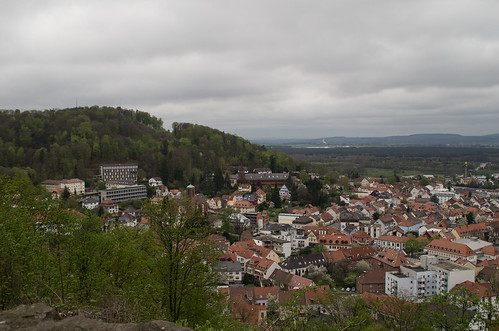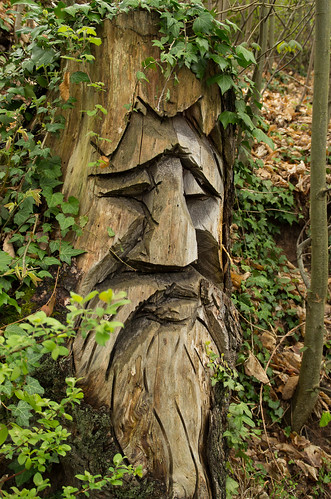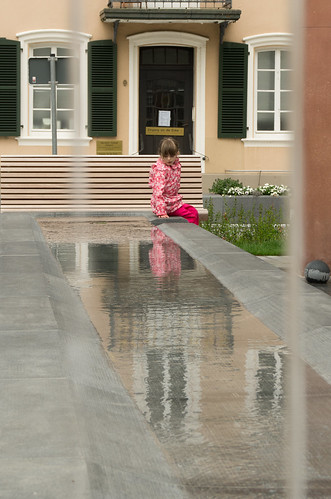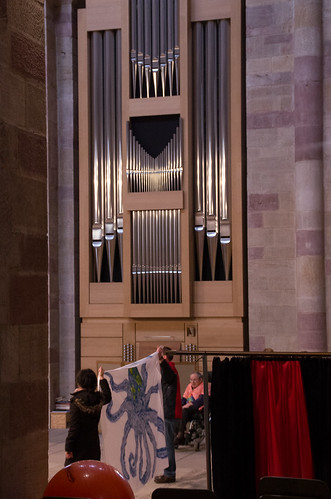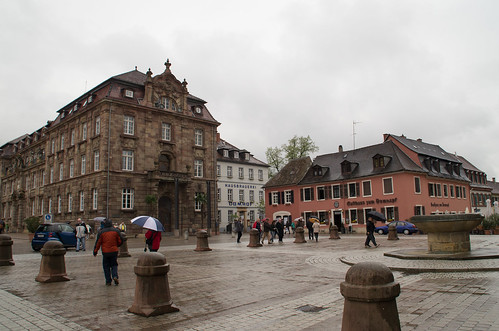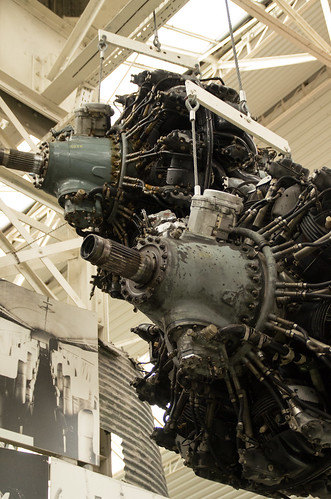After another immensely tasty breakfast, we were off on perhaps our most ambitious sightseeing day ever. The plan was to head over to the Mount of Olives before returning to the Old City along the famous Via Dolorosa and take in as many of the churches on the way that we could.
Fortunately, the weather was looking up with the day dawning bright and clear with a forecast of pleasantly warm, but not scalding weather. Perfect!
Instead of passing through the Old City, we opted to walk around the eastern walls that brought us to our first surprise church of the day, St. Peter in Gallicantu. Not sure what it was, we headed down the short drive and onto the edge of Mount Zion and around the convent to the main church which it turned out to have been the site of Peter's betrayal of Christ. Not unlike most churches in the area, it sat on top of what were suspected to be ruins of prison cells. Both the architecture and interior decor were an interesting fusion of Byzantine and traditional Catholic.
Walking back up to the ridge and then across the Valley of Jehosephat we came to church number 2, the Basilica of the Agony or the Church of All Nations set next to the garden of Gethsemane, with it's beautiful old olive trees. While none date to precisely the time of Christ, some come close at around 1,300 years old. Mind boggling.
The Basilica itself was hard to appreciate properly having lots of scaffolding up (not sure what was going on and surprised that it would be under renovation so soon after Easter) and positively teeming with tour groups all jostling for space and having a mass being said (in Italian) at the same time. Not really an environment conducive to lingering even if we had been so inclined.
From there we headed across the street to the third church - The Tomb of the Virgin. Set down into one of the caves and decorated more in the Orthodox style, it was (again) quite the squeeze, but this time many alcoves and niches let us stand a bit out of the crush and appreciate the rather ornate lanterns draped in many rows throughout, the icons covering the several altars and the general rather unique architecture of the place. Still, it was extremely crowded and so rather than elbow our way through through the different groups, we took our leave, sitting on the steps briefly before heading back into the daylight.
From there it was already getting on toward lunch time and the noon closures of all the churches for masses to be said by the various religious orders who maintain them. So we headed up the hill and stumbled upon a rather mundane looking place that turned out to have an outside seating area on the roof and looked to be quite tasty, if standard fare. It was the perfect place to linger over our falafel and salads (yes, again) and enjoy the view back over the Jehosephat Valley & the Old City with the Dome of the Rock featuring prominently.
Even despite our lingering lunch, it was still a little too early for the churches to be open again. So, we headed over to another little look-out area to discuss what we'd seen to date, doze a little and plan our afternoon.
As soon as 2pm rolled around, we were off again, this time to the Church of Pater Noster, said to be on the place where Christ taught his disciples the "Our Father" prayer. Though simple architecturally, what made it such a striking place were the large tiled translations of the "Our Father" into a myriad of different languages from across the globe. The little pamphlet said there were over 60. Everything from Italian, Greek, and Coptic to Tuvulu, Javanese and []. It gave the sense of commonality, a way for people to connect over a very simple, yet profound text. It was also fun to watch the different groups of pilgrims come into the courtyard, see the different languages and immediately head off to try and find theirs. We found it wonderful to wander about, looking at the myriad different scripts and alphabets knowing that they all expressed the same glory and humility.
After that it was just own the road to the church of Dominus Flevit - the place where Jesus wept. The last church on the Mount of Olives that was on our list. Said to be built on the place where Jesus wept upon seeing Jerusalem in the pilgrimage leading up to the cruxifiction. It had it's own stunning view across the valley and into the Old City. What was a particularly nice touch is that instead of having a solid wall behind the altar, they instead put in panels of clear glass so that you saw the Old City out behind whoever was saying mass. This wasn't a church that could be plonked down just anywhere, the mere addition of adding the clear glass kept you rooted in the specifics of where you were. They also had some really beautiful and what looked like very old mosaics on the floor.
So with one last glance across the valley and the lovely garden of the church, it was back down the Mount of Olives, across the valley and back into the City through the Lion's gate.
We were headed for the Via Dolorosa, but got sidetracked, when, in order to let a car pass, I stepped into what I thought was an ordinary doorway and was surprised to find it led onto an open courtyard. Stepping in for just a moment, I was surprised to find myself standing just outside the Church of St. Anne & the Betheseda pools! The boys by this time had come looking for me (being ahead on the street when the car passed), wondering where I had managed to disappear to. they too were delighted at my find. The Church of St. Anne is said to be the place where Mary was born and is dedicated to her mother, St. Anne. Done in the Romanesque style, it was a much more "traditional" looking church than many others we had seen that day and a welcome change. There is something very elegant in the lines of Romanesque architecture I find and despite its evident age, it still had access to the crypt where they believed that this early holy family lived with a rather lovely series of alcoves and altars.
Just outside the church is the site of the old Beheseda pools (now dry), which many throughout history believed had curative powers. In fact, it is on this place that it was said that Christ healed a lame man. Though the more dangerous bits were cordoned off, there was still quite a lot to wander about freely, poking our heads into cisterns and under arches. The wild poppies were still blooming and their little blobs of red provided a beautiful contrast to the cream sandstone and green grass.
Delighted with our 2nd surprise church of the day, we headed back to the start of the Via Dolorosa and the original stations of the cross. Stations I & II are at the twin churches of the Condemnation & Flagellation, also set back in a little courtyard (with attendant monastery). The stained glass in the Church of the Flagellation were spectacular. Both were quite small churches and one wonders how often that masses are said in them. They felt a bit more "passed over" than many of the others we had seen that day, but still very tender spots in their own right.
From there, we continued down the Dolorosa, which had the feel of a bazaar rather than any place sacred with the usual hustle and bustle of shopping and residents on their way. I'm not sure if it was our own fatigue or the difficulty in focusing on the spiritual in the middle of the daily grind of residents, but we were definitely starting to flag. Still, close to our goal, we pressed on.
Our next (brief) stop was to peer into the, sadly closed, Ecce Homo Church, through which you could see remnants of the triumphal arch built by Emperor Hadrian. It seemed a bit of a bizarre place for a church, particularly given the Roman link to the Christian passion, but in Jerusalem you quickly learn that logic has very little to do with it. However, since the church was closed, really the only thing we could do was peer through the glass doors.
Unfortunately for us, many of the small chapels at the various stations were closed, but we did get a chance to explore the rather bizarre, yet fascinating Orthodox chapel set on top of another early Roman prison. They allege this is where the two thieves crucified alongside Christ were held the night before their execution.
The only other two churches that were open that day were at the site of station 4 (where Christ met his mother, run by an order of Armenian sisters) and station 6 (where Veronica wiped the face of Jesus, run by the sisters). Both were very simple affairs, mere chapels really, more places of contemplation and silent prayer than a centre of systemic community worship.
After running up against another dead end at station 9 and knowing the remainder were in the Church of the Holy Sepulchre, we decided that 14 churches were more than enough for one day and so we wound our way back through the alleys and back to the Jaffa gate. We sat just outside the walls, watching the crowds pass and sipping pomegranate juice (yes, out of season, but still tasty!) and wondering what we would do for dinner. Delving back into the guidebook for ideas, we chose Barood, which was billed as specialising in Sephardic cuisine. Given, the menu, that looked unlikely, but still it was extremely tasty with Branson pronouncing his main of "ossu buco" (braised, bone-in pork shank) to be one of his favourite moments of the whole trip. My paprikash main was also excellent and matched beautifully with a glass of a local wine, "Adom" blend (40% Syrah, 40% Carignan, 10% Malbec and 10%Mourvèdre, if this website can be trusted) from the Somek winery near Zikhron Ya'akov.
Well fed and watered, we took a leisurely stroll back to our hotel and made an early night of it, considering the next morning would be very early indeed.



